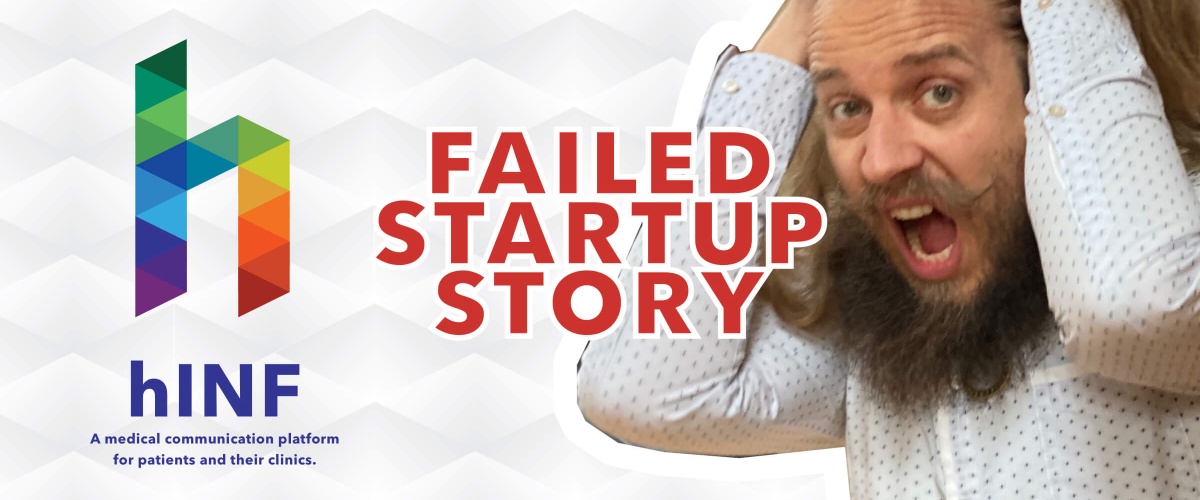Lessons Learned from My Failed Startup
While there’s plenty of stories that go around about successes in a startup world, stories on failure are much harder to come by. This is understandable, as the good news is easier to share than to admit that we have failed. This is a story of “hINF”, short for “Health Information”, a startup from Tallinn, Estonia with a mission to innovate healthcare industry by enabling patients to visit their official medical doctors digitally.
So after three years of blood, sweat and tears, we at hINF have decided to stop trying and to stop our business. The following article serves as a closure and a reflection on mistakes made. Maybe you, the reader, will get some helpful tips and won’t step on the same rakes we did on your startup journey.
Story of hINF
Note: Feel free to skip this part, if you’re not interested in the background story and are here for the lessons.
We the founders of hINF got together by the invitation of our CEO Paula Kink. This initial team consisted of me as a CTO and medical doctors specialised in infectious diseases. As a team, we kicked off our startup by participating (and winning) a hackathon organised by a startup incubator Tehnopol in 2016.
Idea
There were many great ideas brainstormed among the team during the hackathon, but one that really stood out was to build a product that will make official digital doctor appointments possible. This would decrease the number of times chronic disease patients have to visit their doctors and make appointments short and concise.
In a nutshell, a digital appointment would be a secure text chat between a doctor and a patient. This private chatroom could be used to talk about patients condition, giving out their test results, assigning prescriptions etc. It would substitute all doctor visits where a patient and his doctor just exchanged information (consultations, test results etc.).
We got money
We presented the idea on the stage to the jury, patients, investors, fellow start-uppers and other interested parties and it was quite well received. We managed to secure second place in the event giving us startup money of €30k and the winning team secured €40k.
This kind of division was actually a shame, as both of the winning ideas were developed keeping the total amount of ~€70k in mind and by receiving half, both of the ideas were somewhat handicapped from the get-go. Sharing it more like 80%-20% would have made much more sense to me.
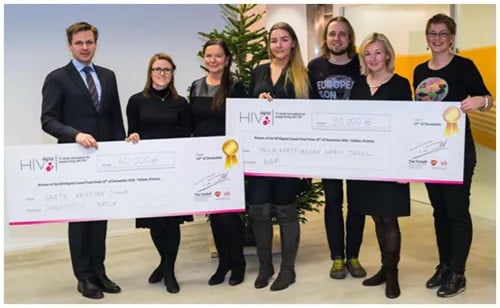
To my knowledge the only project that is still operational today from this hackathon is Medikeep. Others have also finished trying and surely have an interesting story to tell.
Looking back, it would have probably been a good idea to be gentlemen and respectfully give away the prize money to the other winning team, so they could have built their idea in full. If we would have been that generous, maybe one of us would be alive and successful today? We can only imagine the time and energy saved if we would have.
At that moment, we were full of energy and hope that this was an inauguration of a successful health-tech startup.
There were some press coverage and PR involved in winning the prize. A few interviews with our CEO and our team holding a large cheque for the sum was printed in local papers. This gave us a boost of confidence and made us known players in the local startup scene.
A few links to press coverage:
Postimees (Estonian biggest newspaper)
Connected Health Cluster success story
Geenius (Estonian tech news portal)
Hommik (morning TV show)
Product development
After establishing a company and signing the contract with Tehnopol, we had some money on our bank account and went into development with the idea. This money enabled us to build a Minimal Viable Product (MVP) with prize money and pilot test it in one of the clinics with real patients and doctors.
We found a really good UX designer Kalmer Rautam who helped us visualise the solution from web app to mobile apps for iOS and Android.
We outsourced the production from a contractor that could build the software under tight schedule stated in the contract with Tehnopol. The plan was that our semi in-house team could maintain the solution later.
Building the MVP
The contractor who we hired to build the solution helped us tremendously. A project manager there really took the idea apart and wrote a decent technical specification about the MVP of the project. We had open cards and an open Slack channel with the contractor. We informed them exactly on our budget and it seemed to be enough for them to build the product.
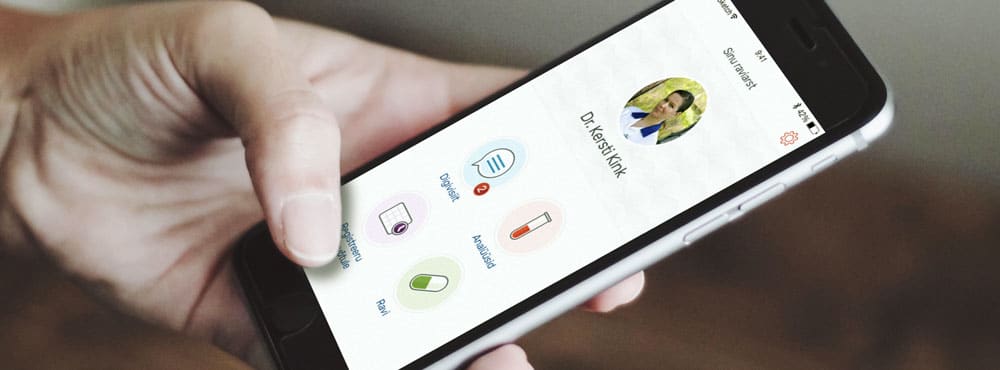
At first, we received a couple of small invoices. This made us think that the chosen contractor was on the same page with us and will build the project on budget. However, in a couple of months when we were in production the bills suddenly got a lot bigger exceeding our production budget by €12k. At that moment, we didn’t mind that much. With the praise we got from the startup community, Tehnopol, their advisors/mentors and other third parties, allowed us to think that this money is peanuts compared to what was in store for us.
While going slightly over budget, the contractor actually delivered quite exactly what it promised; a fully working backend with an API and a working Android app made exactly to match the specifications. This result was a solid MVP and enough for us to start the pilot in Lääne Tallinna Keskhaigla infectious disease clinic.
Piloting
hINF started piloting with a selected group of patients and a few doctors mid-2017. The feedback from users was really good. The timing was perfect for a product like this. Patients as well as doctors enjoyed the solution.
We interviewed patients and doctors after a couple of months of piloting and got valuable feedback which helped us to put together a roadmap for the next steps.
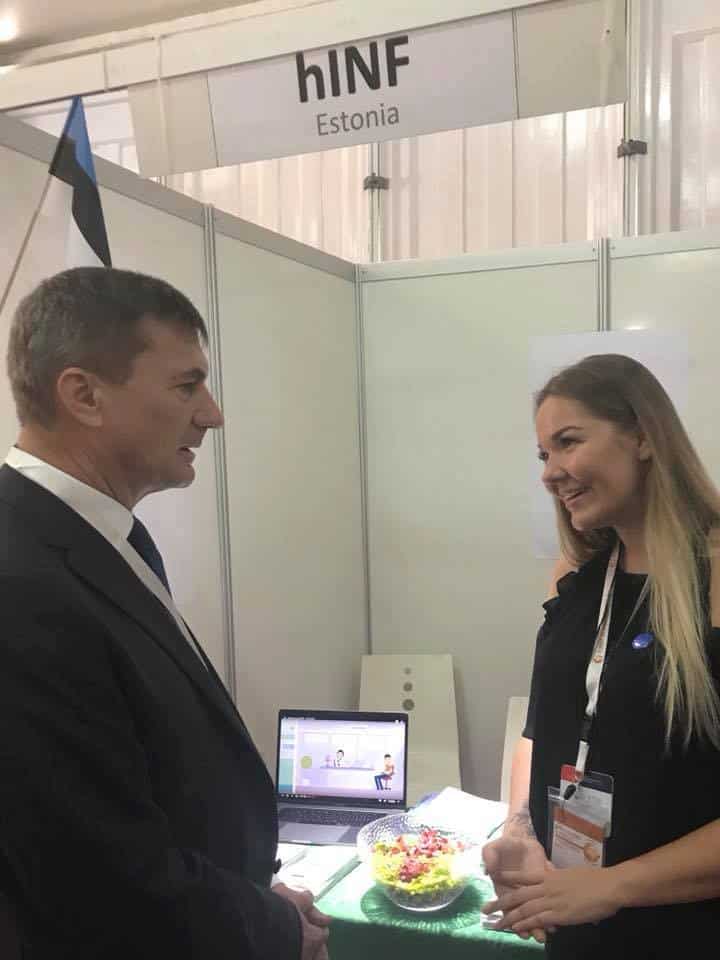
Going broke and looking for Angel Investors
It’s prototyping, testing and prototyping with such solutions. This however needs people hours and those hours cost real money.
It appeared we were doing great with more departments in the hospital wanting to use the solution and other clinics and hospitals interested. But by this time we were actually €12k in debt, exhausted and broke, so we desperately needed another financial push to make things work.
At this point, we had a core of our product ready, but it needed more work to be market-fit. We also had a market that was ready for our product. It seemed like a good idea to start talking to potential investors. As it turned out, asking money is an art form itself and we were really lousy at it.
During the search for a good investor, we discussed with many institutions and potential investors. Each of the discussion was a lesson itself. Three of the most interesting potential investment sources were as follows:
Investor 1
This was actually an alliance of powerful corporations. It looked and felt a bit funny. We approached them, they kindly heard us out, liked the idea and quite easily agreed to just give us money as sponsors. I’m guessing the amounts discussed were not too large for them.
Gotten such praise and hearing verbal agreement from high profile people gave us the confidence to push on with the production.
Surely when the market needs our product and such people agreed to give us funding then the money will eventually come… except it didn’t.
When we spoke on the phone with the investors or at their offices at their board meetings, they were always agreeable promising their full support, but somehow they were never ready enough to sign the sponsorship/investment contract and actually transfer the money.
So we lost quite a bit of time hoping, making presentations and attending meetings defending our ideas with them. At some point, we gave up on waiting and scratching their doors. We got it, it’s difficult to say no.
Investor 2
This was a high profile angel investor that was mentoring us through a startup incubator.
He loved the idea and gave us worthy advice on how to run things. Upon his mentorship, we refined our idea, figured out a better monetisation policy, wrote a more concrete business plan.
He seemed to be committed and said he is almost ready to invest in our startup himself. We just needed to get a bit more proof of the market needs and develop the product and business idea just a tiny bit further.
We didn’t have a paying client and our product was not ready for one yet either. So we brought him the next best thing; an agreement with Estonias biggest hospital PERH stating that if we build the product they will gladly start to use it.
There were more things we did to prove worthy, but at some point, we understood that we’re getting played.
We were proving and proving ourselves worthy while the product was on hold, we were broke and falling further into desperation.
Needless to say this Investor never invested in us. He just wanted to play cat and mouse costing us months of time, energy and hope.
Investor 3
This was a startup investor that had just made a successful exit. He was ready to invest slightly in our endeavour and that was great news. He just wanted to do a few corrections in our shareholder structure. He needed us to buy out one initial founder who owned the smallest amount of shares. Hungry for money we tried to do that and of course, this came as a huge insult to her. She didn’t sell her shares and rightfully so.
However, this event got our tired brains even more tangled up and now we had a negative vibe boiling among our core team.
One of the strongest assets was our team and we decided we don’t want this kind of investor among us that will start to blow up intrigues like that. We made amends soon after, but a hard lesson was learned.
Others
There were a few other potential investors. Most of them matched either the profile of Investor 1 or 2. In the end, there was a huge global corporation interested in us. After meeting in person and then over Skype conferences they just disappeared. Not returning our emails nor responding to chat messages. Go figure.
More Hackathons
While we were looking for a real investor, the things that kept us going financially was hackathons. It’s hard work in itself, but we were rather successful, winning the prize money from Prototron and a few other specialised health-tech related hackathons.
The prize money, unfortunately, was usually not much. We’re talking €3-5k in most cases. This, helped us pay to our hard-working programmers.
While hackathons are a great source of income, all of them are specialised. This means each of them tries to find solutions to a specific problem.
We already had a pretty good product for a specific market, so hackathons somewhat made us lose focus and made us bend our initial idea.
All in all, while we did have great momentum with potential clients and a really good PR through hackathons, we were unable to convince any real investors. We just couldn’t ask money well enough and ended up running ourselves broke.
While almost broke, we were often overworked, having to concentrate on actual jobs that paid the bills. At some point, all of this overload led me to complete burnout.
A decent runway however would have given us peace of mind so we could concentrate on the product we’re building and not worry about side hustles.
Startup lessons to learn
Long story short, below are the takeaways from our health-tech startup journey that lasted a little over 3 years.
• Developing a market capable product is a time consuming process
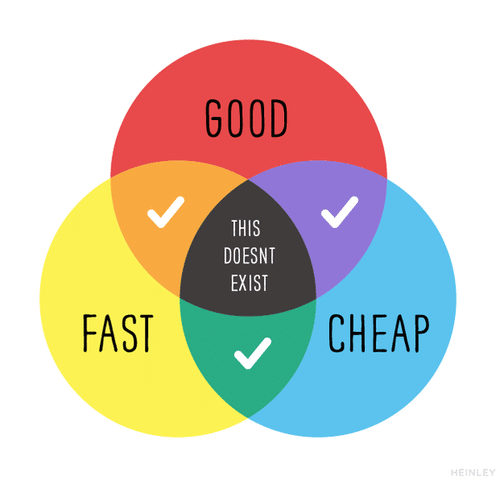
A lot of work developing, prototyping and testing will go into building a market capable product. It takes a lot of time to polish out bugs to make a software product stable and robust. It also takes a lot of time to develop a product that matches perfectly to user needs. This means a lot of interviews and questionnaires with end-users and further modifications of the product.
Don’t be naive, thinking you can build a digital product cheaply and fast. A software product can be cheap, high quality and developed fast, but you can only choose two of the three.
• Plan your expenses well
The money on your bank account might seem more than enough at first, but it will melt away after time goes by.
Make sure you plan your expenses well and stay within the budget. Adding an extra feature might seem like a good idea, but it’ll add numbers to the invoices later. Make sure you have a strict scope and budget with contractors.
Always have open communication with contractors. It’s okay to ask “what will it cost for us?” every time some new feature request is added to the scope.
Save money for testing, additional development and for bugfixes. Software always has bugs and some of them might come up at later stages, when you can’s squeeze them into initial scope of the project.
• Don’t take advice too literally
The more people know you exist, the more interested people you attract. Each of them has ideas and advice to make a product work. While most the advice is good and they might have worked for someone, make sure you don’t take them too seriously. Hear out the advisors, but decide for yourself on how to run your product.
Blindly following people will only confuse you and the users.
• Enthusiasm will get you only this far
Founder enthusiasm is a powerful thing that could get you quite far, but it will almost never get you to success. You and your team need to get their bills paid. Otherwise, their enthusiasm will fade and they’ll go on working on things that actually pay.
Bootstrapping gives you a lousy product that won’t fly too far.
Users can sense if your app or website is half-baked. Make sure you have money to hire the best professionals you can find. To enter the market your product will have to be top-notch.
• Be concrete and don’t waste time on doubtful investors
Investors are usually high profile people and it’s hard not hear them out. Even more so as you seem to depend on their goodwill to make things happen. They often ask you to do this tiny thing before they’ll be ready to invest, making you run errands you don’t actually need to at this point.
Don’t wait for an investor to make up their mind. Go to the next one. Pitch your idea and move on to the next.
There’s no time to waste and the more people you’re talking to, the better. Investors are driven by the fear of missing out (FOMO) and the more they hear about you from other guys at their golf club, the more they’ll want to give you the money. Let them work for it no matter how broke you are.
It’s understandable that potential investors need to feel assured that their investment will pay back someday. However, a good angel investor will have a good enough nose sniffing out potential successful ideas and a high tolerance for risk. If your idea is worthy they will invest in it without wasting too much time.
• Don’t lose focus
A lot is going on. It’s easy to lose focus from the building of the product. It’s easy to lose sight of things that matter while you’re focused on convincing people about how good your idea is.
Getting a good product out there is the mission number one.
Make sure this is what drives you. Evaluate every decision you take against how it contributes to your product core. Don’t pile up your product with features even if a powerful potential investor thinks it’s a good idea.
• Your team is sacred
Your team is actually all you have. These are the people willing to put in hours without getting paid. They are sacred. Do everything you can not to piss them off.
Just a slight bad vibe within the team will mess up your fragile startup vibe.
Be thankful and appreciate each team member no matter how little they contribute. Never let outside people dictate how you run things.
• Try to stay sane
While a physical worker might have injuries like a sprained ankle or sore back, intellectual workers pay the price with their mental health. Your brain is a great machine but it will overheat if too many problems get fed to it at once. You might get injured that way too infecting your mental health making you incapable of working and making decisions for some time.
Make sure you don’t take things too seriously. Business is just a game.
Try to play it the best you can, but take care of yourself and your mental health. Meditation is a helpful tool to notice how your mind works. Also, make sure you get enough sleep and do take vacations every now and then.
Conclusion
After more than 3 years of trying and the competition creeping upon us, we at hINF have decided to give up. No matter how good PR we got and how well the market received our pilot and ideas, we have agreed that we have failed. We still have a working product prototype, but we feel that we are now too late to the game for it to fly properly.
We were lousy at raising capital and lost focus and hope too much.
It’s easy to blame others for our failures, but the decision on how to run our businesses is on us.
The best I can do at this point is to share the experience and lessons learned. Maybe it’ll help some of you to make your startups fly.
I have gathered some of the documents and PowerPoint presentations into a zip file. These files include shorter and longer presentations, one-pager, business idea description and many product screenshots. If you’re interested in the idea or think these materials would help you out, then please do use them however you see fit.
hINF Software screenshots
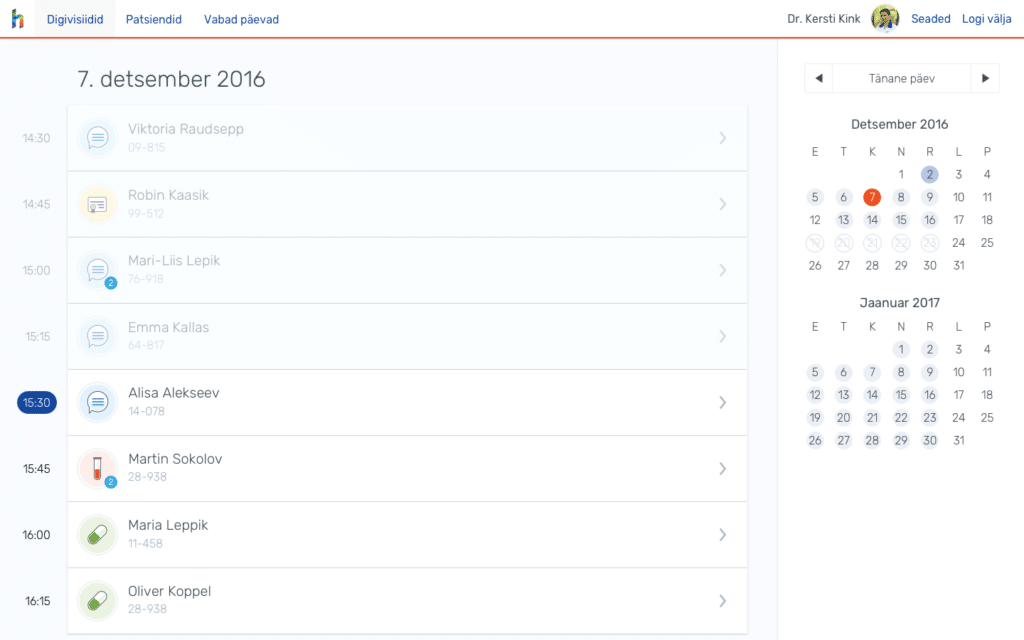
Doctor frontend homepage 
Patient test result graph 
Doctor chat screen 
Doctor appointment time settings 
App title screen 
Part of app storyboards
My job is building software (mostly iOS apps). I’ve been building apps and led digital projects for 20+ years now and am passionate about what I do. If you have a project that could fit with my expertise then please let me know via the contact section.
Feel free to read other articles from my blog
